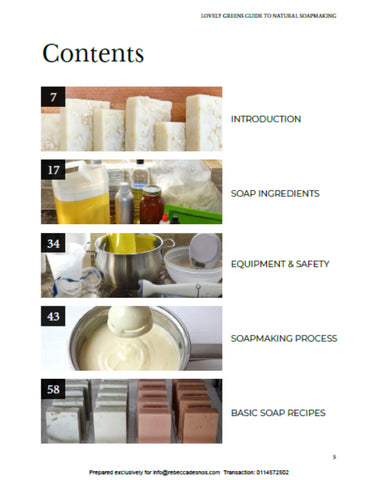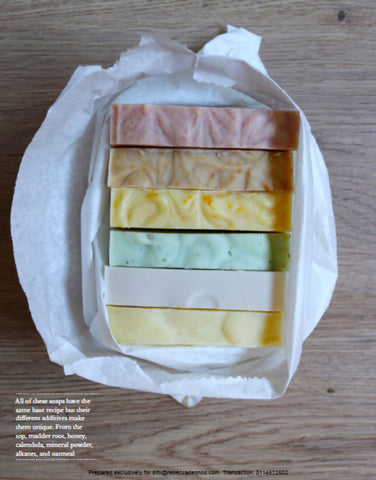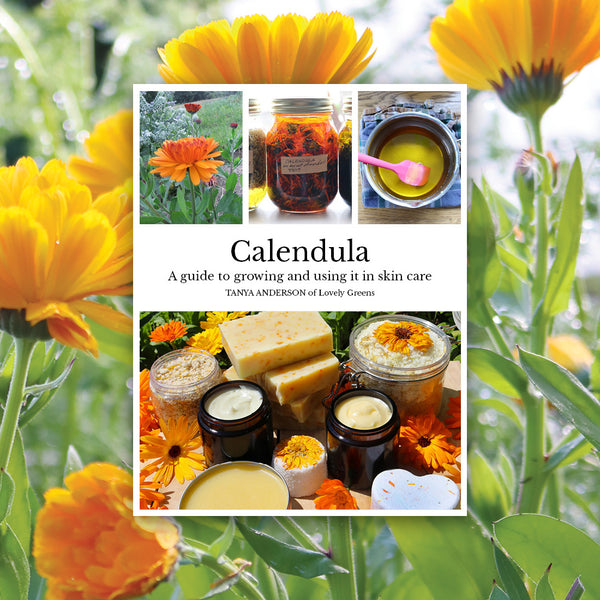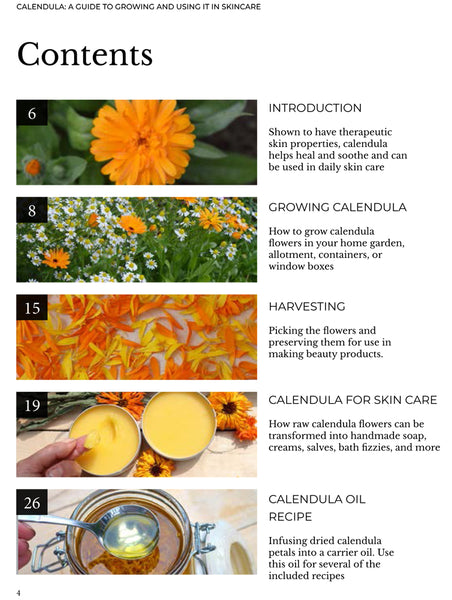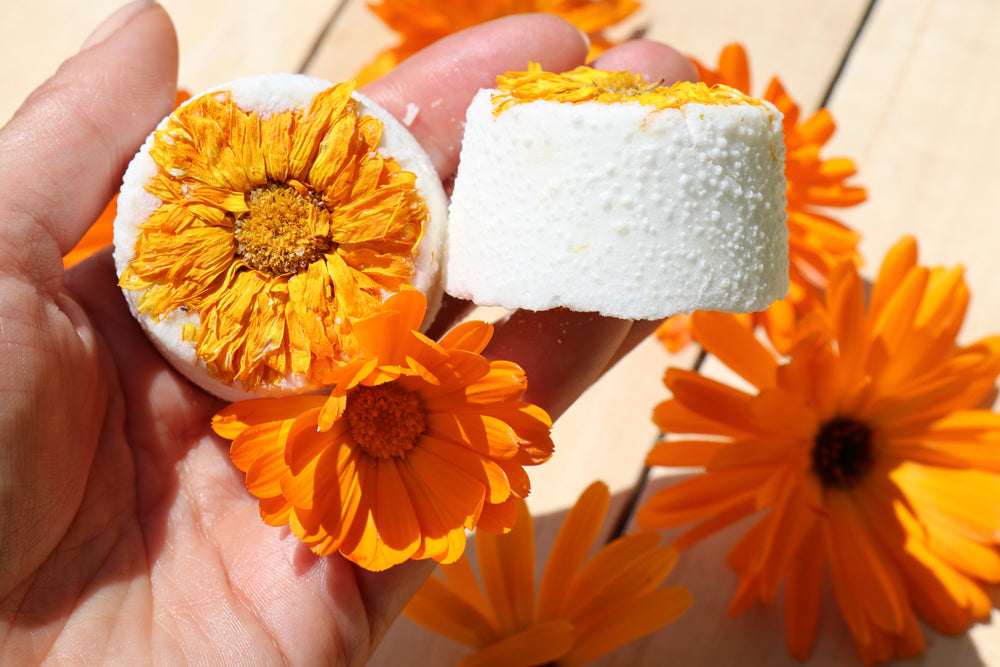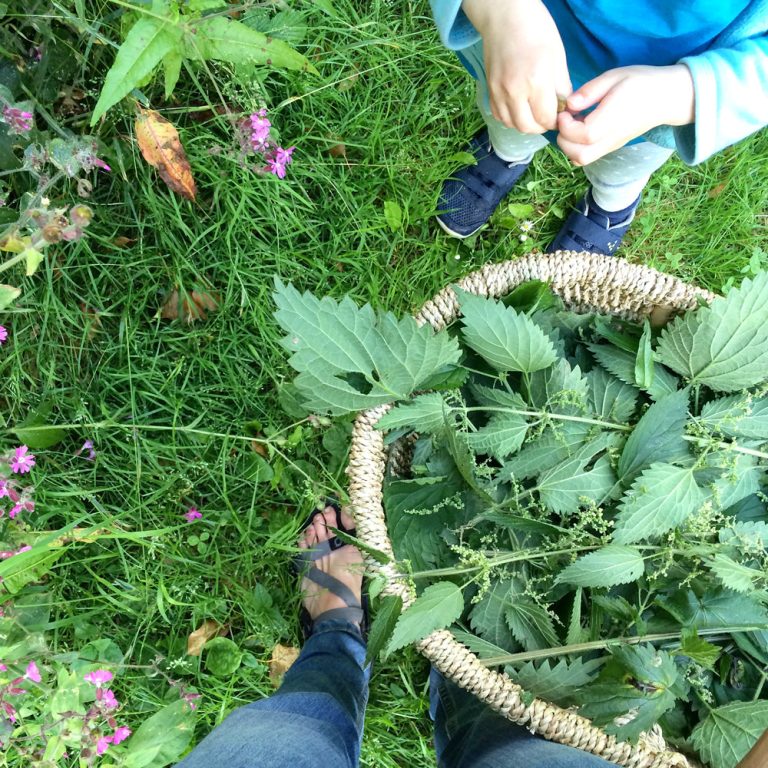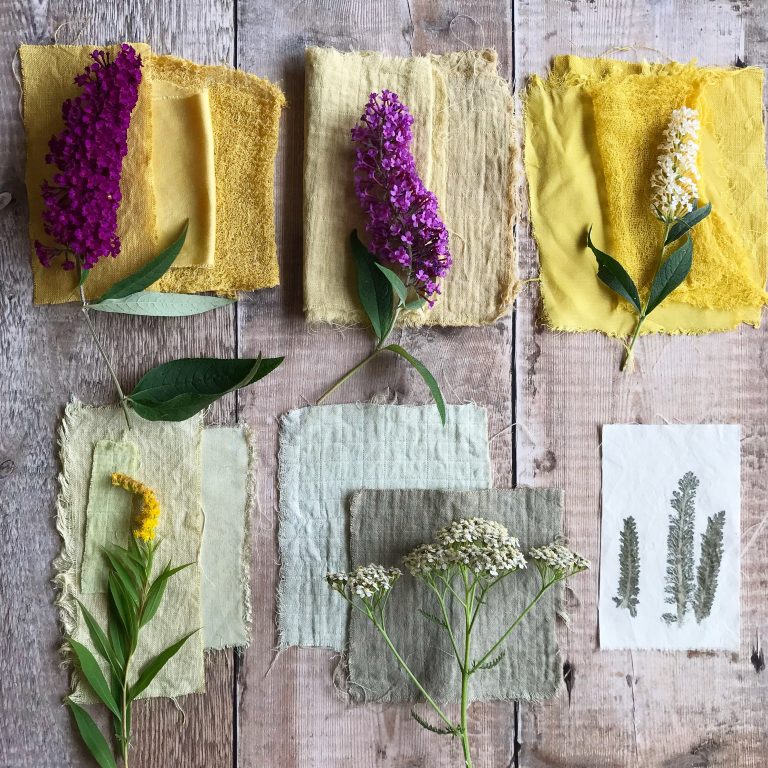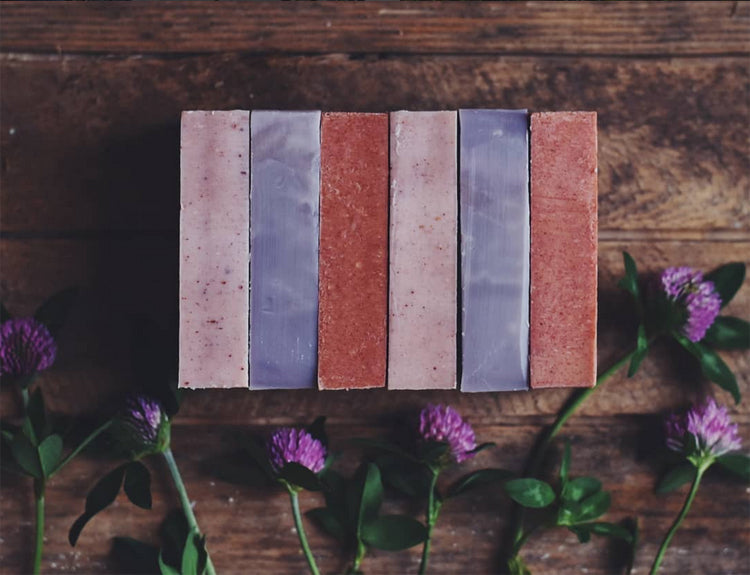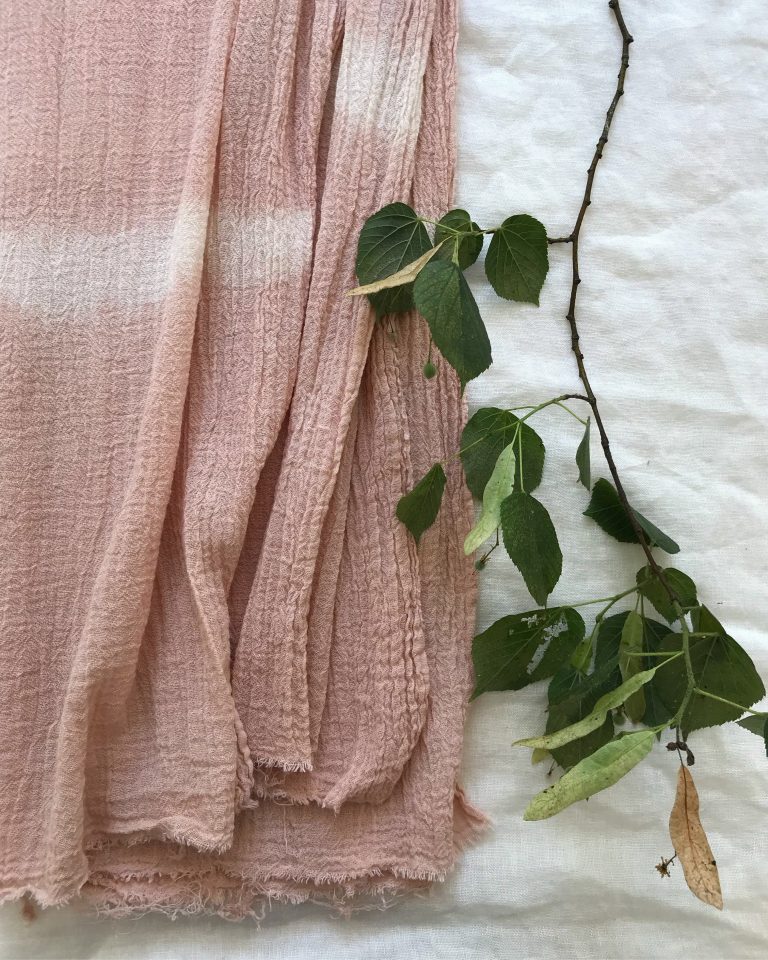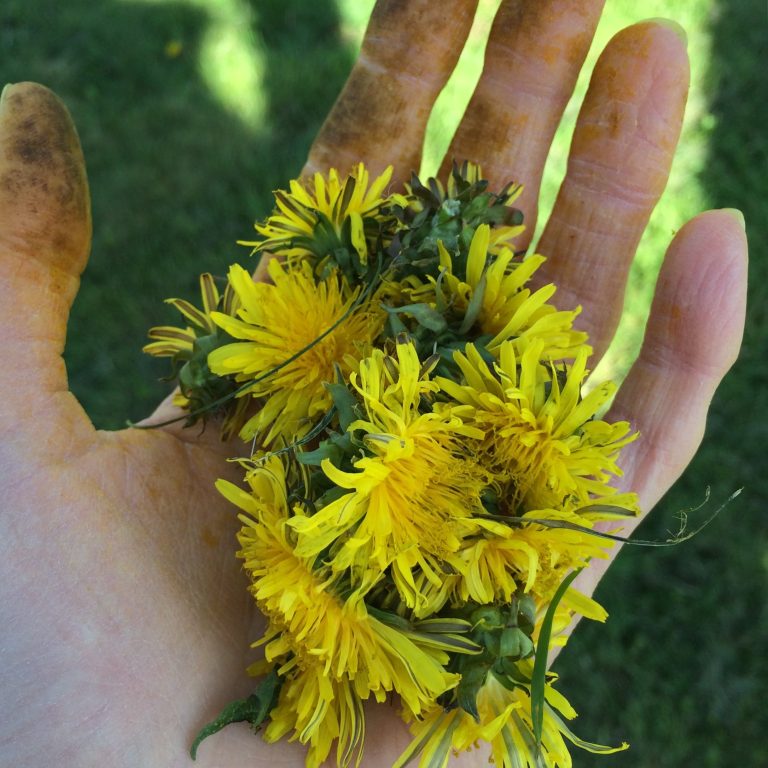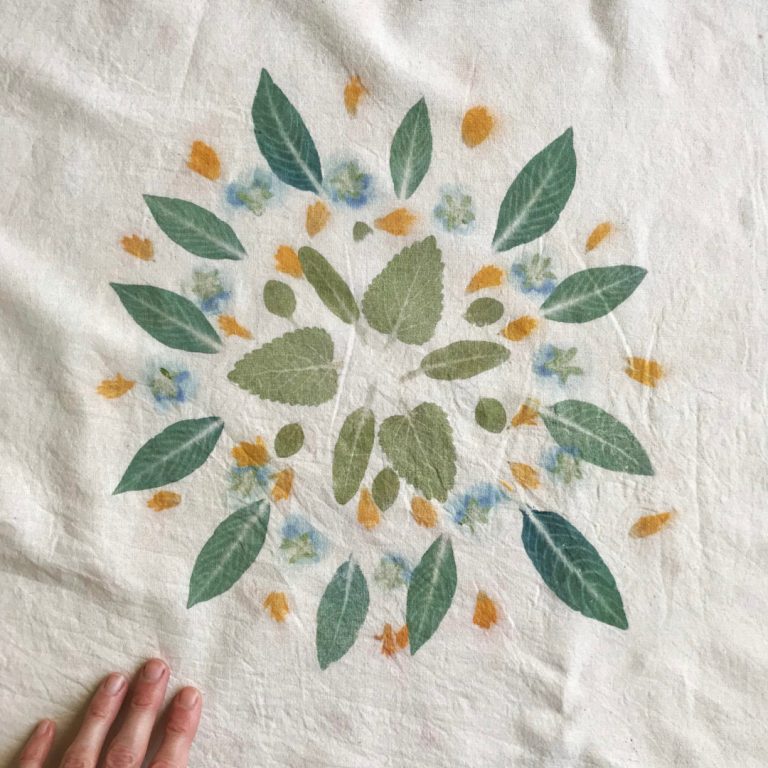Are you intrigued about the crossover between natural dyeing and herbalism? Well, soapmaking is a fantastic bridge between the two crafts.
Imagine infusing colourful, healing botanicals (and colourful clay!) into soap so your body can absorb the goodness.
Did you know there are many dye plants that are also soap colorants? Madder, indigo and woad, are just a few!
I chatted to Tanya Anderson from Lovely Greens about using natural colorants in soaps and how to infuse botanicals into oil. I’m delighted to share the interview in just a moment. Keep reading until the end where Tanya shares a special recipe for Calendula Bath Truffles!
Tanya writes the popular blog called Lovely Greens, is a soap maker, gardener, You Tuber, and lives on the Isle of Man, in the UK.
eBooks for beginners
You can learn how to make your own cold-pressed soap in the Lovely Greens Guide to Natural Soapmaking. It’s an eBook and you can download it instantly.
*this blog post contains affiliate links.
Pictured above. From the top-down, the soap colours are from: madder root, honey, calendula, mineral powder, alkanet & oatmeal.
Tanya has also written another eBook called Calendula: A Guide to Growing and Using It In Skincare.
These are fabulous introductory guides for making your own soap and skincare products. Tanya’s writing is very clear and approachable, and I think you’ll love them as much as I do!
At the end of this blog post, there’s a bonus calendula recipe which I think you’ll love — it’s an extract from the calendula eBook. The homemade bath truffles would make such special gifts.
OK, so let’s jump into the interview…
Hi Tanya. It’s lovely chatting to you today. Can you tell us how you got started making soap?
I’d just signed up for my first allotment and had started a small blog sharing what I was doing on the plot. My interest in growing plants for food and skincare began then, and I was always looking for ways to use what I grew in projects.
That’s how I discovered the artisan soapmaking world online. Beautiful soaps, mainly from America, that people were creating and selling at farmer’s markets. They were art pieces in themselves, and I was wowed by the stunning colors and sometimes botanical decorations. I also loved how useful they were! Everyone uses soap of some sort.
So I set out to teach myself how to make cold-process soap from my small rented kitchen. There were some initial mishaps, but I persevered and got hooked! By the following year, I had my own farmer’s market stall!
What are some of your favourite types of coloured clay to add to soap?
Clay is an incredible natural soap colourant. It comes in various pastel, natural and neutral shades and the hues they produce in soap don’t morph or fade with time. French pink and French green clays are my favourites, and I also love Cambrian blue clay.

I’d also love to work with Brazillian purple clay, but finding a supplier in the UK has been challenging. I’ve seen photos of soap made with it and can’t wait to see how it looks in real life.
You grow your own calendula which you use to colour your soaps and add into other homemade cosmetics. What do you love in particular about calendula?
I love how versatile and multi-faceted calendula is! It’s an edible flower, medicinal herb, and natural colourant all wrapped into one. (Take a look at Tanya’s eBook all about about growing and using calendula in skincare.)
Different varieties have different colours, too, including yellow, orange, and pinky-yellow.
Most importantly for soapmaking, it’s a dependable colourant and decoration! Unlike most other flowers, calendula petals hold their colour in the high pH of natural soap. While lavender and rose petals will turn a rusty brown, calendula remains vibrant and beautiful and makes for great botanical decoration.
I use calendula flowers to decorate the tops of bars and mixed into the soap batter to leave tiny flecks of colour.
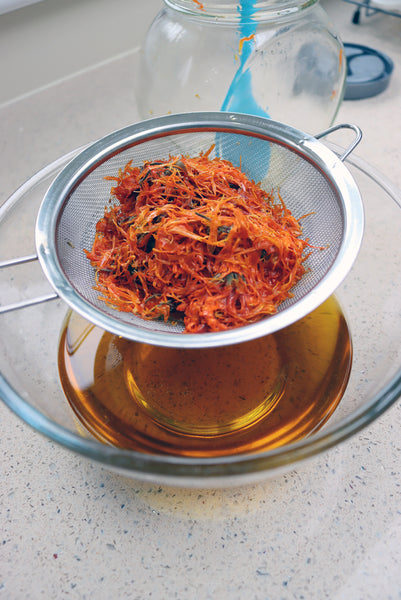
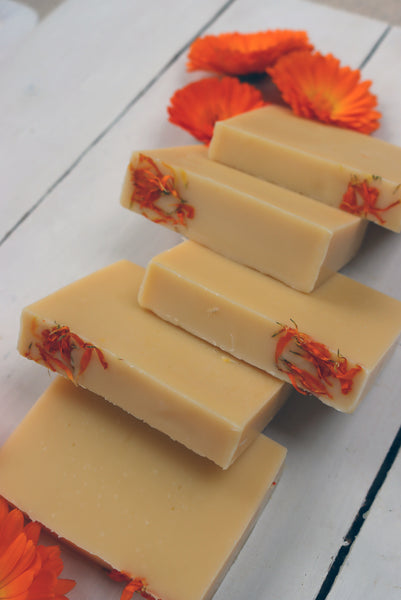
When we make dyes for fabric or ink, we usually extract the dye into water (although sometimes alcohol). However, for soap and cosmetic-making you often extract dyes into oil. Can you tell us a little bit about this process and which plants extract best in oil?
Plants are unique little entities with different components that extract into various solvents, including water and oil. Some can infuse well into both, while others favour just one.
Soap’s main ingredient is oil, so it makes sense to extract plant material into oil.
The three dye plants that I extract most into oil for soapmaking are madder, calendula, and alkanet (Alkanna tinctoria).


Though you can use water infusions (or other infusion methods) for each, the hues you get in soap are much less vibrant than when extracting into a liquid carrier oil. For example, you can get a beautiful shade of true pink if you infuse madder into oil, but the colour you get from adding powdered madder or a madder water infusion to a soap recipe is muted to pale.
To infuse a plant into oil, you usually dry it first. Prolonged contact with moisture can make carrier oils go prematurely rancid, and in soapmaking, that’s terrible news. Rancid oils can ruin your soap, making it smell strange and causing oxidization and spoilage. Fresh plant material can rot at the surface of the oil too.
Once dried, add it to a jar of liquid oil, such as olive oil and leave it to infuse for several weeks to months. The ratio of plant material to oil varies from botanical to botanical and from parts of plants to other parts of plants. For some seeds, like annatto, you’d use a teaspoon or two to a quart of oil. With dried calendula flowers, I tend to half-fill a jar with them and then top the whole thing up with oil.
Soap undergoes a process of saponification, and this can change the colour of the soap. What are the most surprising colour changes you’ve seen?
Alkanet root is dramatic since the infused oil you create with it turns a beautiful ruby red. Then when you begin to make soap, it turns grey to blue! Only through gelling soap and allowing it to cure over several days to weeks can the soap turn a beautiful soft purple.
Another almost shocking transformation is the soap you can make with Himalayan rhubarb. The infused oil finishes as a bright yellow, but when you make soap with it, the batter turns a vibrant magenta-red!
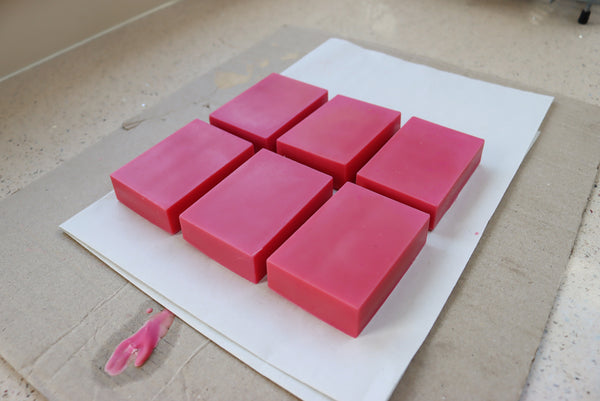
Do you have a favourite botanical to add to soap that offers colour as well as therapeutic benefits for the skin?
The most therapeutic properties soap can give your skin is the conditioning nourishment from the superfat—the extra oil in the recipe that remains free-floating in the bars and doesn’t turn into soap.
Rich mango butter and cocoa butter are my favourite superfats, but you can use liquid oils too. If you infuse these superfatting oils with botanicals, such as calendula, then it’s possible that the healing properties of calendula can remain on your skin after washing.
Also, essential oils can linger on your skin after using soap—you can smell them! Essential oils are highly concentrated natural plant chemicals that have therapeutic benefits, and some (like citronella and may chang) can even tint your soap a light yellow.
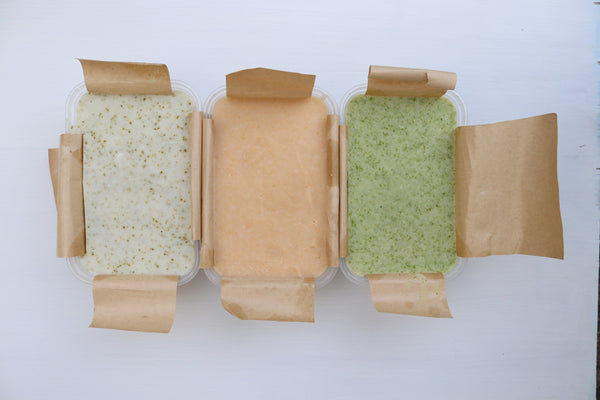
You can even add ingredients that add colour and offer exfoliating properties. What are some of your favourites?
Any small particles that you work into your soap bars have the potential to add colour and exfoliation. Poppy seeds add beautiful black specks through soap and can be very scrubby.
My favourite natural colourant-come-exfoliant has to be dried and pulsed mint, though. Think of the same texture as peppermint from a tea bag. If you add a spoonful to a soap batch, the little green pieces will turn greenish-brown and infuse a golden halo around each piece. You can feel the dried mint when you use the soap too, and it has a very light and comfortable exfoliation.
Thanks so much for the chat, Tanya!
Now let’s take a look at the…
Calendula Bath Truffle Recipe
Extract from Calendula: A Guide to Growing and Using It In Skincare
Bath truffles are a more posh version of a bath bomb. They look almost edible and are loaded up with rich oils like shea and cocoa butters. These oils melt in the bath along with a lighter fizz and give new life to dry and tired skin. They also look stunning as a set and would make a treasured gift. Recipe makes 8 truffles.
Ingredients
- 128g (4.5 oz / ~1/2 cup) Citric acid
- 370g (13 oz / 1-1/3 cups) Bicarbonate of soda (Baking soda)
- 14g (0.49oz) Shea butter
- 14g (0.49oz) Cocoa butter*
- 1 tsp Calendula-infused liquid oil
- 1/2 tsp Ylang Ylang essential oil (optional)
- 8 Dried Calendula flowers
* This is a solid oil used in making chocolate. It is not the ‘Cocoa Butter’ skin care lotion that you might be more familiar with.
Equipment
- Digital kitchen scale
- Silicone mold with small 1” cavities
- Two stainless steel pans, one being smaller than the other (or a double boiler)
- Rubber spatula
![]()
1. The calendula flower heads that decorate these truffles are dried in a specific way. I laid them face down in the food dehydrator so that they dried fully open but flat.
2. Place the dried calendula flower heads face down at the bottom of each cavity in the mold.
3. Measure the citric acid and bicarbonate (baking soda) into a mixing bowl.
4. Fill the larger of the pans half-way with water and bring to a boil.
5. Measure the shea and cocoa butters into the smaller pan and float it inside the pan of boiling water. Gently stir and when fully melted, take the pan out of the water and set it on a pot holder on the kitchen counter.
6. Stir in the calendula-infused liquid oil. If you see the oils turn a little cloudy, return it briefly to the pan of hot water to melt them again.
7. Slowly drizzle the melted oils onto the dry ingredients whilst stirring. Use a spatula to get every last drop of oil out of the pan and into the bowl. Stir in the essential oil if you’d like a pretty floral scent.
8. Firmly pack the mixture into the mold cavities and refrigerate for 1-2 hours. Afterwards, pop them out and allow to come to room temperature. Store them in an air-tight container for up to a year.
9. To use, break or crumble them into the bath and watch as they fizz and melt. These can make your tub very slippery so please take care.
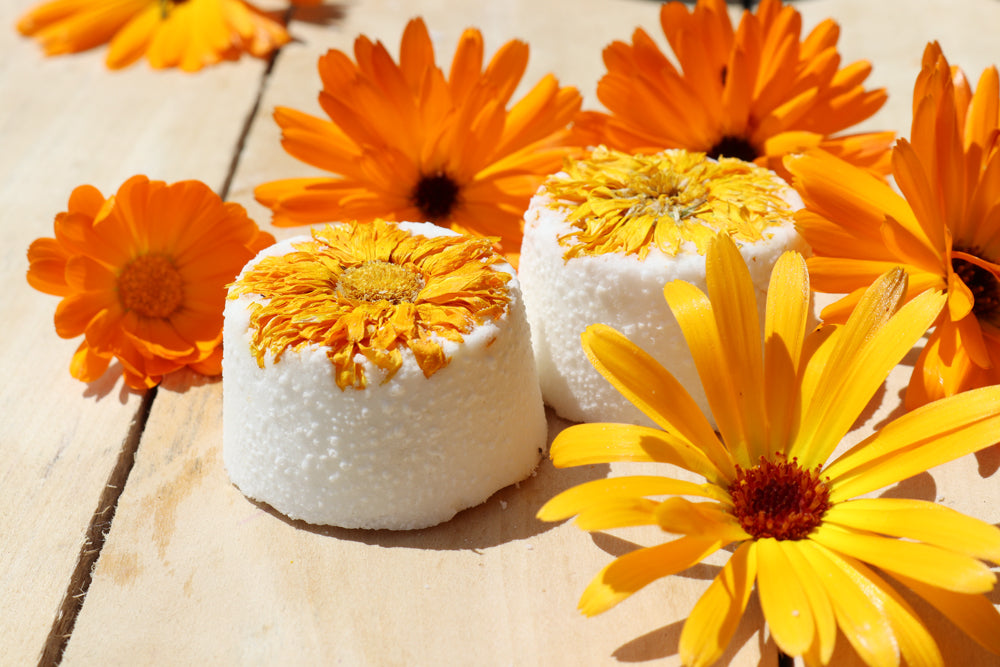
You can find Tanya’s eBooks here:
Also, you will love Tanya’s printed book A Woman’s Garden.
Visit Tanya’s You Tube channel here.


